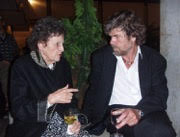In 1826, The Russian poet Alexander Pushkin wrote “But with the truth he attracted hearts. But with science he quelled mores.” (From, Stanzas). Such words could be used to describe the life and work of my friend Professor Viktor Sokolov (1946-2019), who died last month at the young age of 73.
Viktor was an accomplished surgeon, anesthesiologist and bronchoscopist. He created the Russian Bronchology Group and was the first Russian regent to the WABIP. He fought to defeat conventional wisdoms and dedicated his life to modernize bronchoscopy practice in his country. In addition to numerous leadership positions, Professor Sokolov was also a former Chair for the Endoscopy Commission of the Russian Ministry of Health, and a long time member of the Academic Council.
As department head at the Moscow Research institute he led efforts to perform novel interventions in patients with early cancer of the larynx, trachea and bronchi, esophagus, stomach and duodenum, bile duct, choledochus, rectum and colon. He helped promote the use of electrosurgery, argon plasma coagulation, laser thermal destruction, photodynamic therapy and stent insertion. He published more than 300 original scientific papers, dozens of monographs, clinical care guidelines, and 10 teaching manuals. He held 26 patents for scientific methodologies and instruments.
For more than ten years, I corresponded frequently with Viktor and his son Dmitry (also an expert bronchoscopist). It was a great honor to help them build a training program in Moscow. A few years ago, with my colleagues Nikos Koufos, Rosa Cordovilla, and Enrique Cases, we helped faculty implement the use of training models, checklists and assessment tools in bronchoscopy education. This has been particularly helpful for building skills in endobronchial ultrasound.
Viktor was a scientist at heart, and it is as a scientist that he approached his medical practice. His dream was to cure lung and digestive cancers in their earliest stages, and for
Viktor, we shall miss your humor, your intelligence, and most of all the inspiration of your relentless pursuit of truth.
Farewell, my friend.
Please subscribe to Colt’s Corner to automatically receive an email notification of future posts. Sign up with your name and email on the NEWSLETTER button on the Bronchology International home page at www.bronchoscopy.org.


